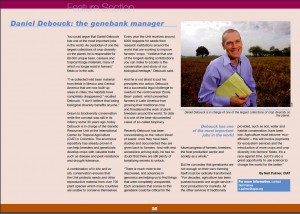From Bill Gates’ annual letter on the work of his foundation:
There are three things that modern agrotechnology brings to this seed improvement process. The first is simply the ability to gather plant samples from all over the world and use databases to keep track of thousands of plants grown under different conditions.
The second is sequencing and the third is transgenics, in case you were wondering. One of these days, I’d like to take Mr Gates down into Genebank Database Hell. But hey, we’re working on it. And the Foundation is helping.
